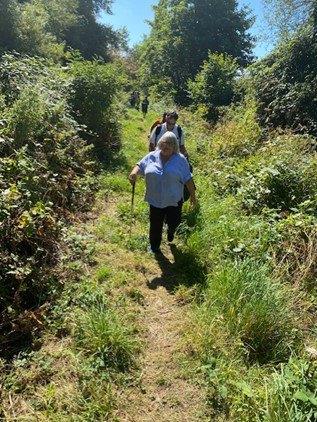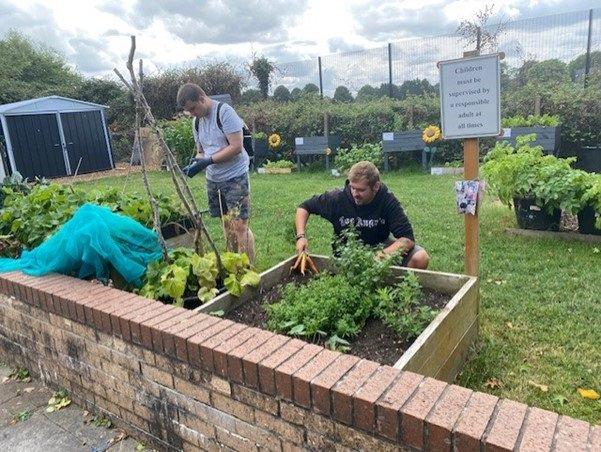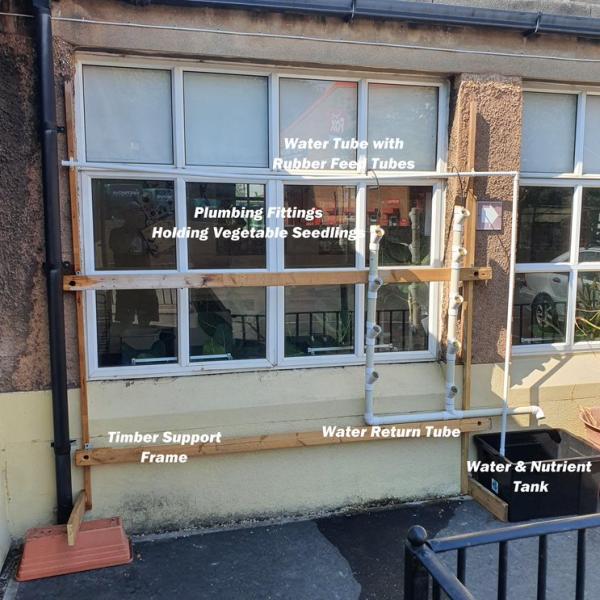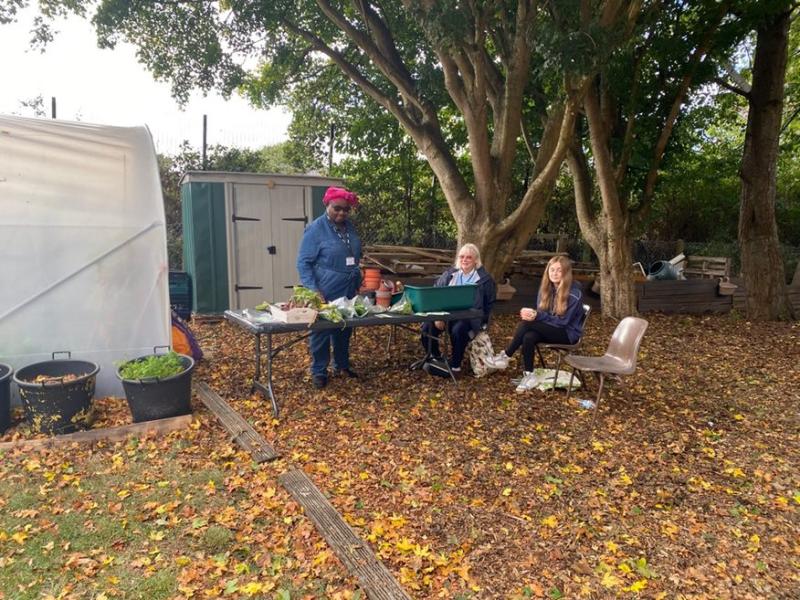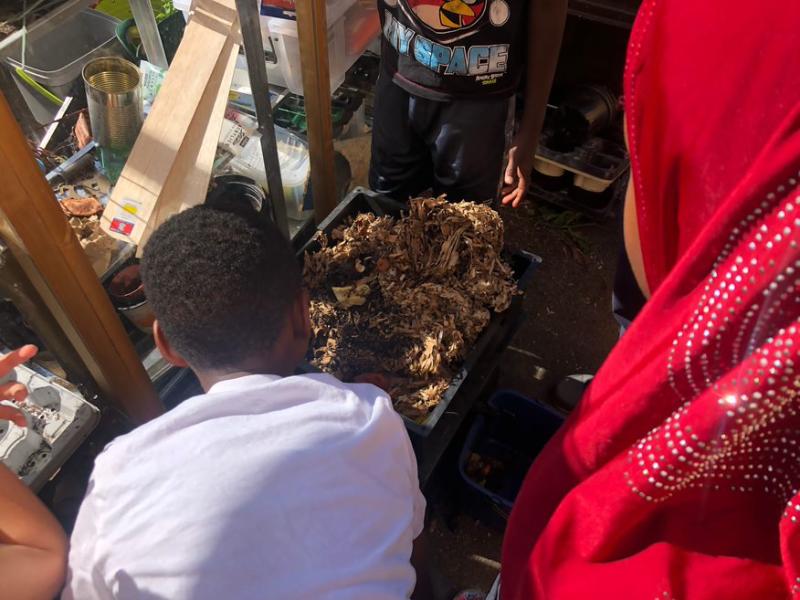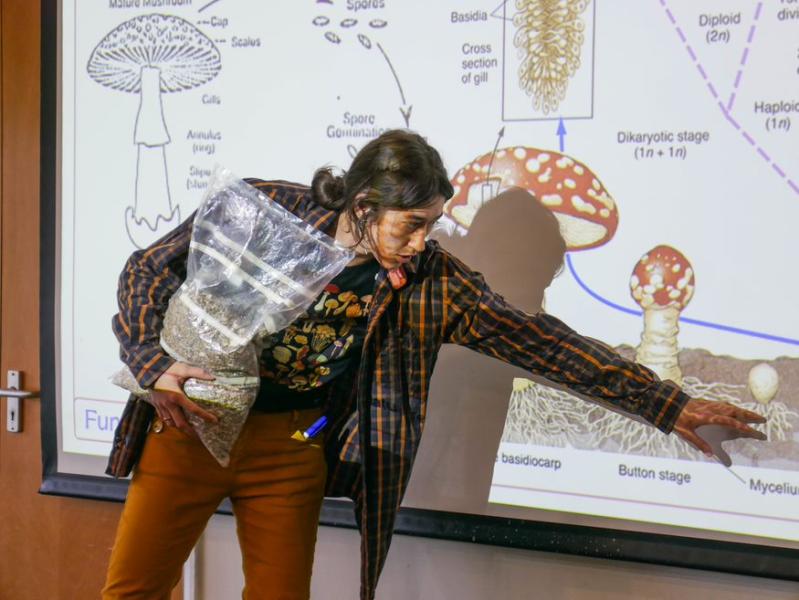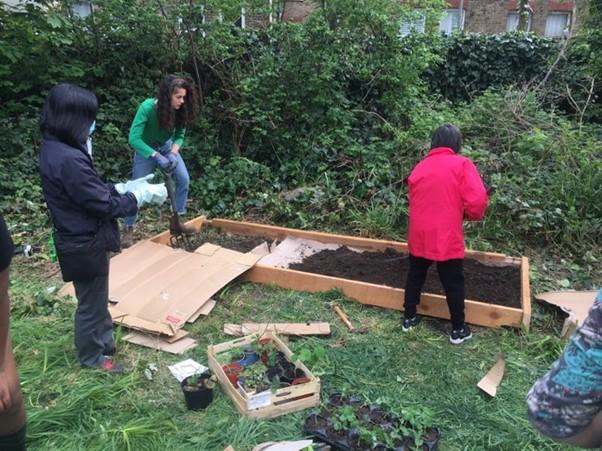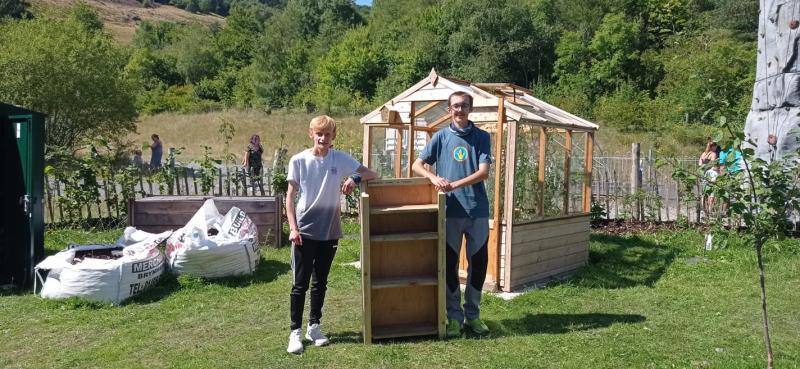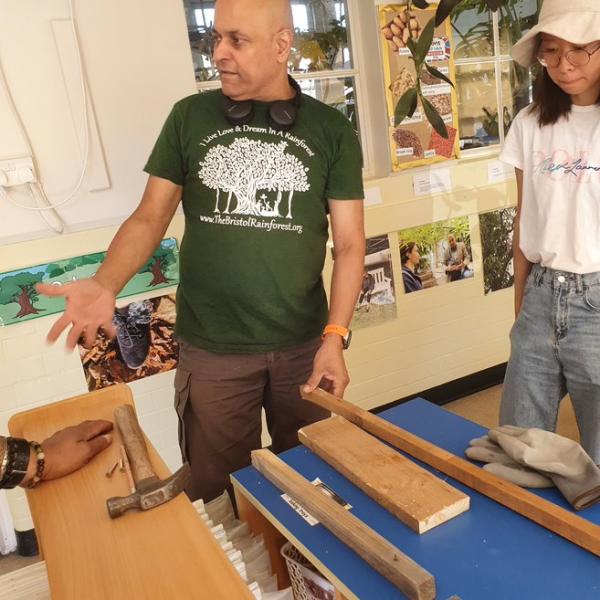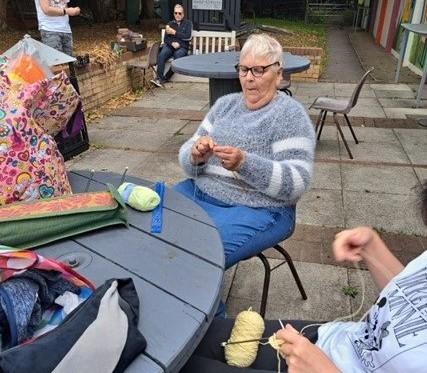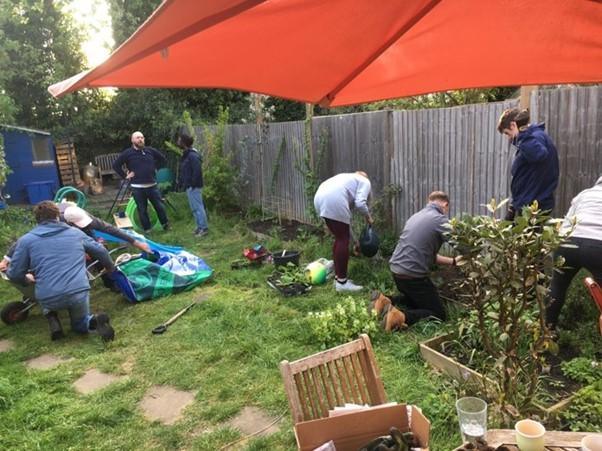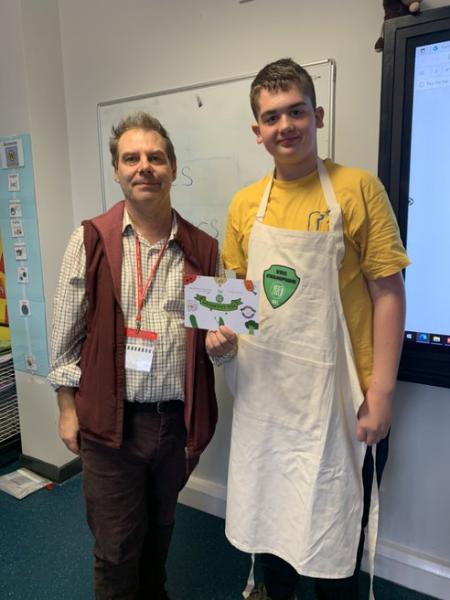Joanna Watson04 Dec 2022
Nature is good for you – research and people’s experience during the pandemic told us that – but we also know that many people are nature-deprived and that minoritized communities often have worse mental and physical health outcomes. In setting up the Local Nature Innovation Fund (LNIF) to provide small amounts of seed money, we wanted to tap into a range of hyper-local projects to see what works at the grassroots to address this nature deficit.
We didn’t expect when we started the fund as an experiment that there would be so many learnings, such creativity, so many challenges to overcome and some wonderful insights and collaboration.
Rich conversations. Great insight.
We held three coaching calls with each project organiser over 6 months and wanted to share some of their experience and insights. We hope that what we’re sharing here will strike a chord with anyone wanting to run a grassroots project to help people get more engaged with nature and each other. I suspect that the learnings will in many ways be common to anyone trying to run a local project, keep up the momentum, work with volunteers and retain the joy and the fun in the face of worry and heartbreak.
Obviously, each project is unique to its community and location, facing specific challenges and local conditions. We will record elsewhere what we learned about this kind of experimenting, what we found about running such a fund and what we could do better next time. We will also hear the project organisers’ voices directly telling their stories – this is about us trying to capture some of the common themes that arose directly from the projects.
Getting started ...and keeping it going
The first hurdle in organising any community-based project is overcoming the barriers to getting folk on board. All the organisers talked about the importance of building trust with participants from the community and their own confidence in engaging them. But where to start? And what problems do you face in keeping it going?
Make it visible – and practical
Language and other cultural differences can be a barrier in engaging people in your project. Door knocking and leafletting tend not to be very effective as people are resistant to being recruited to activities in their own home. But, as Catherine from Kingsmeadow@Made Forever and Rose from Mountford Growing Community found, just being busy doing things outdoors can attract interest of passers-by and in some cases lead to engagement.
Recognise the importance of prototyping
It’s hard to sell a concept - a practical demonstration is worth a thousand words. Amrish from Flourishing in St Paul’s set up a workshop to create a vertical veg growing system on the wall of a local primary school.
Chris from Tai Calon conceded that he would have prompted involvement in his seed libraries much quicker had he commissioned a prototype set of library shelves first to fire the imagination.
The initial idea can tap into an unexpected need. By using the workshops to develop the prototype vertical growing garden, Amrish found an unexpected appetite for DIY amongst the women volunteering at the nursery school project. Through the workshops, they developed supplementary practical skills using saws, drills and jigs.
Take the time it takes
It takes time to build relationships, trust and confidence. Organisers can help participants to develop a sense of ownership of a growing project, but leadership and coordination take responsibility and people can be nervous of taking it on. Catherine from Kingsmeadow found that it can take people 1-2 years before they build enough confidence to step up.
Projects can open a door to people who are struggling with loneliness and isolation but who are reluctant to engage in activity. Catherine found that once they were encouraged to access the garden space outside the community hub they first used it to relax, then to socialize, then to get involved with gardening activities. But take it slowly. Catherine says that feeling there’s supportive staff and a ’community family’ helps build people’s confidence in what then becomes familiar. But having the funds to pay for a volunteer coordinator would make that relationship building a lot easier. And lacking sufficient funding is always a constraint.
To gather stories in a meaningful way you need to work at the pace of the people you’re listening to – trust needs to be won, it’s not about extracting data. Rosina from Black and Green Ambassadors is happy to let some great moments listening to elders go uncaptured because recording it would have ruined the moment.
It helps to have an experienced organiser to navigate the system
The community greening project at Mountford has been a huge help in proving residents can transform aspects of the estate and make community spaces valued and changed. How the space functions around us should work for people who live there so it’s important to build a sense of ownership. The project aims to give people autonomy over their immediate environment and such hyper-local activities can be empowering.
But simply engaging in a project does not overcome the ongoing blockages. Rose at Mountford says that you just have to keep working on aspects of the big structural issues, like the council hanging on to car parks which could be turned into green space. Knowing how to navigate the system, build lasting relationships with council officers and access funding takes application and confidence and her role as organiser has facilitated this process.
Projects like Mountford can help by building the numbers towards a critical mass in one location and then inspiring others to do something similar in nearby estates, until this kind of citizen power becomes the norm and helps demonstrate to councils that there is an appetite for change.
As a young queer person of colour Alani from The Village describes the challenges of pitching proposals for using space for workshops or storage to white male property owners. They are keen to emphasise that the Queer and Trans People of Colour (QTPOC) community is self-sustaining, but this is one area where white allies have been able to offer meaningful support.
Set the tone and reflect on your objectives and roles
Greg from Time to Grow Walthamstow says he’s learned the importance of achieving the right mix of informality and fun with your core group (but not just mates together) with a framework that enables them to take the project seriously and plan it properly. Context and ambiance are important. They meet in pub or café not in an office or at home, but also have some facilitation tools to hand to move things along and set expectations and boundaries. Once you’ve established roles, don’t be shy about defining the boundaries between each role (organisers, facilitators, volunteers, garden owners) and think about what you call the different players (Facilitators? Hosts? Stewards?) to create the right tone and atmosphere.
Be prepared to be flexible, connect with your ecosystem – who can you learn from?
Greg suggests regularly reviewing the aims for the project and observes that sometimes wider societal objectives (e.g. a co-operative food system) give way to softer ones like creating connection and wellbeing. They are the root that remains when time is in short supply.
To this end, knowing where you are in the local eco-system helps define roles within your group and creates opportunities to build out from the initial project, while tapping into existing skills in the community to amplify impact and reach. Like Amrish at Flourishing in St Paul’s, he suggests raising your ambition and considering whether you can build your project into a wider network of activity, so it’s not stand alone.
Don’t spread yourself too thinly and know your own boundaries
Lack of capacity and time for volunteer organisers of events or activities are a huge stress and can compromise their ability to maximise take-aways, follow-up activity, and get feedback. Admin can come to dominate the original purpose they are passionate about. Finding enough consistent support from others can lead to difficulties in delegation and potentially result in burn-out or not delivering what was originally planned.
Sabrina from Black Trail Runners warns that organisers must be careful of their own boundaries and recognise where to put their focus. Having regretfully made the decision to cancel their event this year due to the Queen’s death, they had such overwhelming support from their community that they will now go ahead in 2023. But in future, Black Trail Runners will pay for a professional event organiser and ensure their own skills are focused on creating the experience of the event, communicating their key messages and relationship-building, rather than exhausting their efforts on logistics.
Don’t underestimate the amount of handholding needed when launching a project dependent on volunteers. It can be difficult to hand on a project in the community when the project organiser ceases to be the main driver - as Chris from Tai Calon has discovered, so a project may not live beyond its initial funding.
Alternatively, if the lead project organiser becomes unavailable, new fresh creativity and a different approach to managing activities can follow. Greg from Time to Grow Walthamstow realized this when he had to hand over the project to a colleague temporarily, who took a more robust approach with garden owners over which parts of their garden were suitable for veg growing. Greg admits he’d probably been too cautious over maintaining relationships rather than exercising his expertise.
Start small, dream big
Focus but be ambitious. Concentrate on one location and build out from that, rather than spread resources too thinly. Amrish from Flourishing in St Paul’s says you need to give yourself wriggle room; go deep on something that’s containable rather than try and do lots at once. Think about how to build on the approach to a small project to create a vision of where this could go – and use this as a basis for a manifesto/programme/ concept to present to funders.
Amrish is now pondering how to install more vertical allotments in schools and in neighbourhoods and use them to provide food for a community café which will in turn promote more engagement with the vertical allotments and make them more visible.
And build on the ripple effect
Kingsmeadow@Made Forever set up the garden for nature/gardening activities and it is now used as a hub for other community get-togethers, including knitting, a socializing alternative to the pub and an over-60s mobility group. It is catalysing wider greening activities in the community, as they take on more greening projects with a local GP practice and nearby common.
A project can act as a beacon stimulating interest within a local area encouraging others to replicate activity on their own estate – or develop skills to run their own community project. At Mountford, Rose feels she has gained the confidence and skills to advise a local café owner on gardening and food growing to support his mission to share cooking skills, rather than providing a service; she is beginning to create a peer-to-peer network to share her experience of navigating challenges..
Working on the project and seeing possibilities has fuelled ambition for broadening its reach and asking questions about how they might develop it. Greg thinks they could pitch to private garden owners about taking over the whole garden rather than negotiating for small pieces and take a more holistic approach to fully integrate community growing with the garden owners’ needs.
Creating a context through related activities helps reinforce the success of a project. At Tai Calon, beyond the seed libraries funded by Friends of the Earth, Chris is working on a food waste animation, cooking workshops and cooking equipment giveaways to create a focus for food activity in the area and give it visibility. He believes that if people see lots of little things start to happen in their area, they are more likely to feel it’s worthwhile taking ownership of something themselves The badging and the website and the mapping will give it a presence and help promote the idea of local food growing – more than the sum of its parts.
Just do it – but don’t go it alone
When creating a prototype, there isn’t time or capacity to test first; Darren from Hull Food Partnership says you have to just do it and if there is a repeat action, evaluate then build on what you learn.
Alani from The Village echoes this. Just go for it. Treat it as an experiment and be prepared to flex and adapt your plan. Less can be more so do simple activities – so much to gain by just being outdoors. Allow spaciousness and go with the energy, don’t worry about shifting your objectives - all learning is worthwhile.
Make sure you have helpers on the day to share the organizing, facilitate sessions, do some practical stuff.
Mariam from Totnes Community Herbal wholeheartedly recommends finding a mentor for affirmation and decompression. Organisers from the Black Trail Runners have only become closer and better equipped to support each other, from overcoming serious capacity issues and the need to postpone their event two days before it was due to take place. Sabrina says they can take on anything together now.
Finally
Friends of the Earth is deeply grateful for the way these local organisers have engaged with us – we appreciate their honesty and openness in sharing their experience. Their anecdotal feedback and personal reflections have provided us with invaluable insights and given colour and depth to what we’ve been learning. All projects involve a degree of experimenting and they don’t always work out as planned but as Darren from Hull Food Partnership says: “If there wasn’t a high failure rate we’d be wondering why we were doing it in the first place”.
If you'd like to know more about what we learned from running the Local Nature Innovation Fund, please get in touch. And if you'd like to find out more about the individual projects, please contact us and we'll pass on your details.


